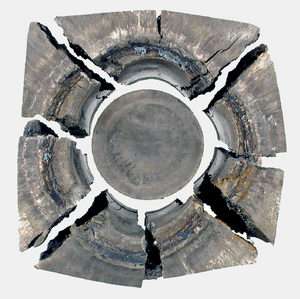How did life on Earth originate?

Did life arrive from space? Rather than developing here, could the first life forms have been catapulted to Earth on a chunk of rock from outer space? Investigations show that microbes are capable of surviving just such a journey.
At the mention of life forms from other planets, images of green Martians, ET-like creatures or Klingons immediately spring to mind, largely influenced by the film industry. They travel through space in UFOs in order to conquer the Earth. Something similar may well have happened a long time ago: The ‘UFOs’ could have been lumps of rock that broke off from a planet when it was hit by a meteorite, and their ‘crews’ could have been microbes.
This is the assumption on which the panspermia hypothesis is based. However, assuming that there are microbes on other planets, Mars for example, would they be able to withstand the pressure that arises when a meteorite crashes into their planet and catapults their rocky UFO into space – a pressure that is 400,000 times higher than that of the Earth’s atmosphere?
Researchers at the Fraunhofer Institute for High-Speed Dynamics, Ernst-Mach-Institut, EMI have systematically investigated this question for the first time: “We simulate the shock wave that occurs when a meteorite crashes into Mars,” says Dr. Ulrich Hornemann, who is in charge of the experiments at the EMI. “To do that, we detonate an explosive cylinder that accelerates a metal plate. This metal plate then hits a steel canister containing two thin stone plates between which there is a thin layer of microbes.”
When the metal plate crashes into the container, a shock wave is generated that passes through the stone plates and the layer of microbes. The astonishing thing is that even at 400,000 times atmospheric pressure, one ten thousandth of the microbes survive the impact of the metal plate; the main reason for this being that the inhospitably high pressure only lasts for a fraction of a second just like the impact of a meteorite.
Because the rocks that are broken off by meteorites usually have small cracks and crevices in them, the experts have also investigated the feasibility of porous rocks as ‘UFOs’. The result: Microorganisms can also survive here. And the small fissures are also advantageous to the tiny organisms in other ways, providing them with protection on their journey through space against UV radiation, solar wind and the icy cold and thus increasing their chances of survival, as the EMI’s project partners at the German Aerospace Center (DLR) found out. “It is therefore possible,” says Hornemann, “that life on Earth came here from other planets.”
Source: Fraunhofer-Gesellschaft





















